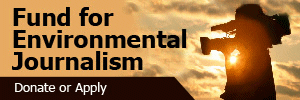Sniffing Out Invasive Plant Species — Conservation Canines in Action

Plant species that take root outside their normal range and spread aggressively are wreaking havoc in ecosystems worldwide. But specially trained detection dogs are on the job, following their noses to find the invaders so they can be eradicated. Contributor Nancy Castaldo reports on a demo of this conservation tool by a scent-savvy Lab and his devoted handler.




















 Advertisement
Advertisement 



